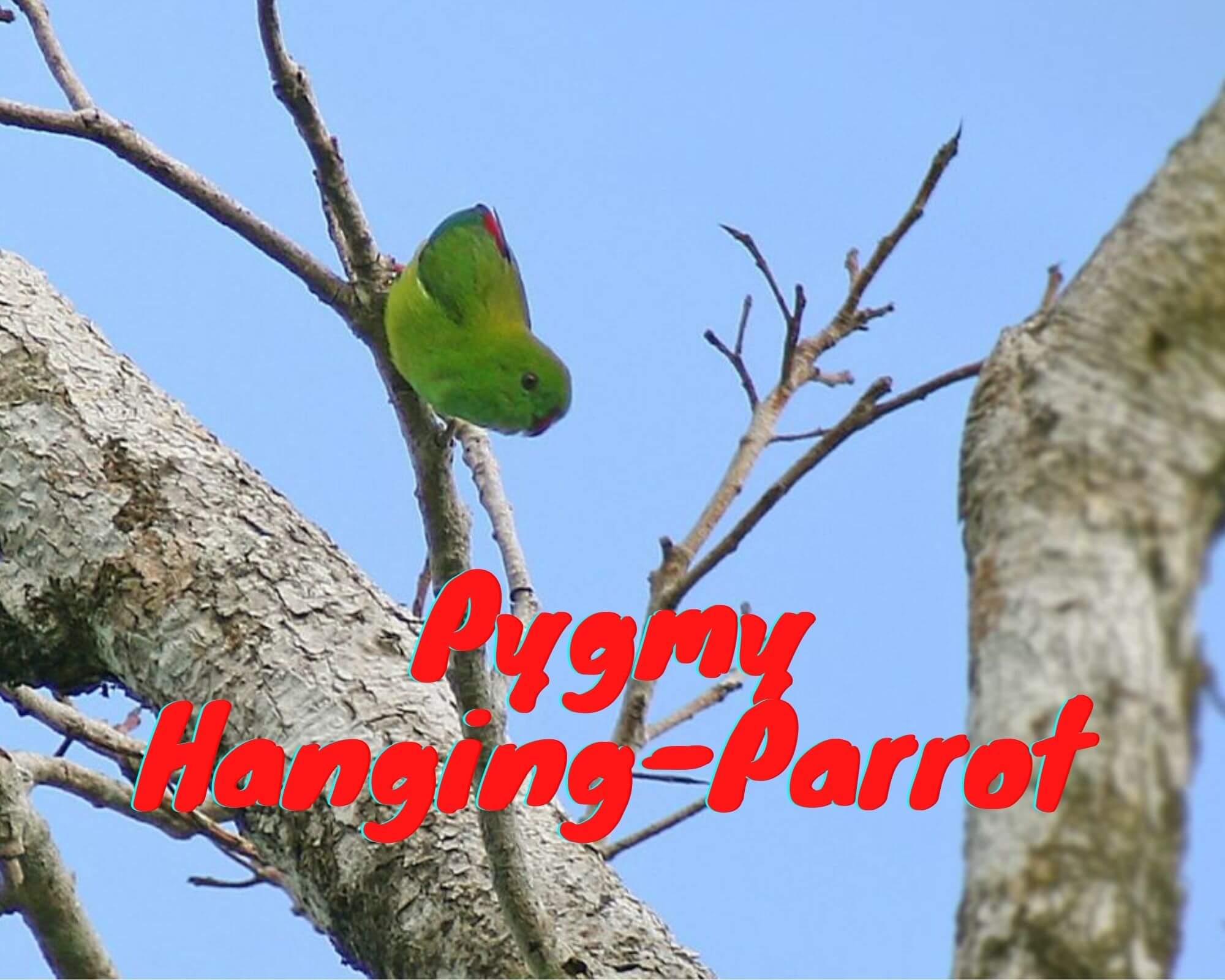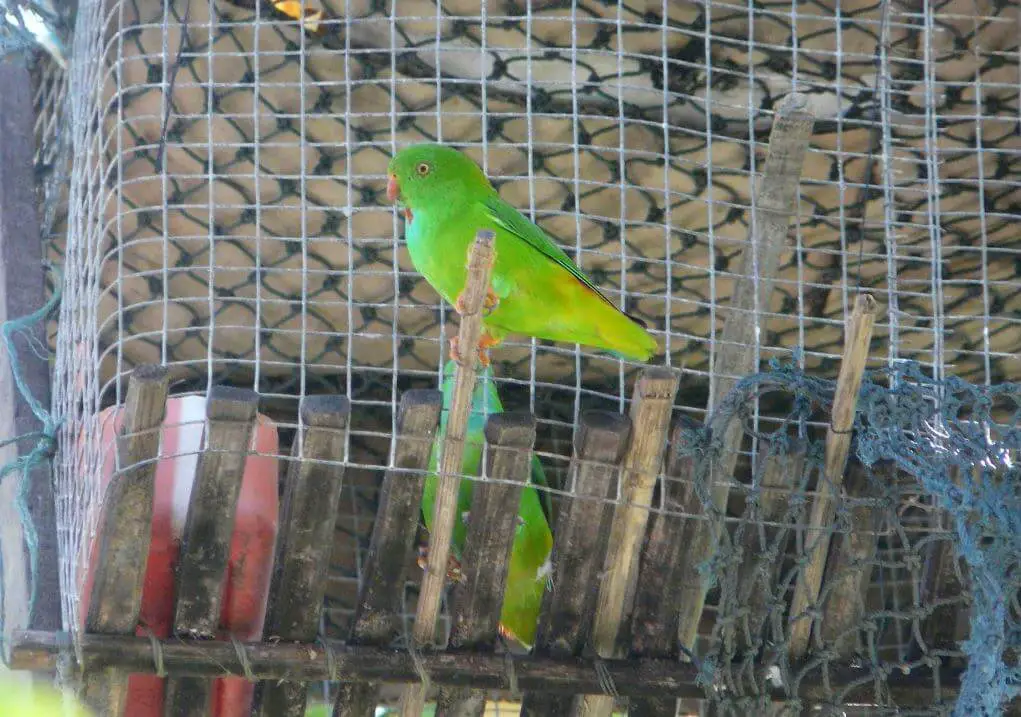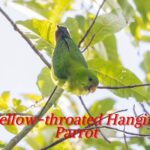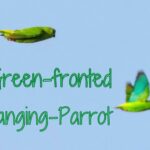
Pygmy Hanging Parrot 10–11 cm. Green, more yellowish on underparts; bill red; thin red spot on throat, bordered bluish below; rump and upper tail-coverts red; legs orange.
Female has red throat patch reduced or absent. Immature has no throat patch, yellowish bill, and legs.
Forms a species group with L. pusillus and L. flosculus, and is sometimes considered conspecific with the latter. Monotypic.
Subspecies
Monotypic.
Distribution
Sulawesi and Butung.
Habitat
Hill and lowland forest, occasionally mangroves and trees in open country, from sea level to 1000 m.
Sulawesi Pygmy Hanging Parrot nesting
SOURCE: Birds Wildlife Indonesia
Movement
Probably nomadic, following the flowering of trees; in May 1871, after several months with only a single observation, large flocks appeared at the seaboard in extreme N Sulawesi, frequenting mangroves.
Diet and Foraging
Figs (Ficus), nectar, and blossoms.
Sounds and Vocal Behavior
Not well documented. Pygmy Hanging Parrot Calls include short, staccato, high-pitched, insect-like notes, given in phrases of 2–4 notes, e.g. “tsi-tsi-tsi-tsik”.
Breeding
Feb and Aug. Pygmy Hanging Parrot Nest in a hole in the dead palm. Clutch size unknown, but egg size (in captivity) 18·9–19·6 mm × 14·3–15·7 mm.
Conservation Status

Not globally threatened. Currently considered Near Threatened. CITES II. A BirdLife “restricted-range” species. Overlooked or decidedly local, generally in small numbers.
Uncommon to rare, Dumoga-Bone National Park. Generally low numbers in trade, but 2131 reported by Indonesia in 1991; zero quotas were set in 1994 and 1995.




















